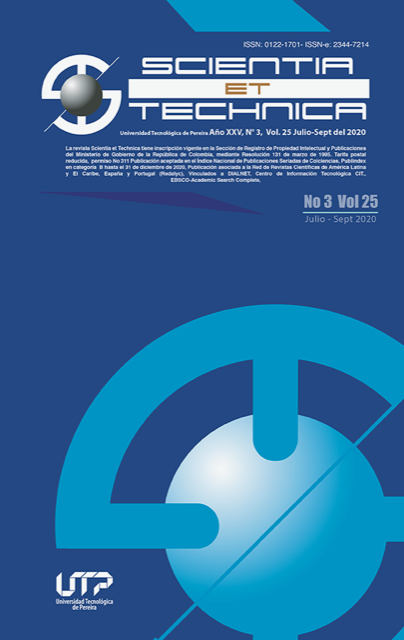Two agents with GBFS algorithms working cooperatively to get a shortest path
DOI:
https://doi.org/10.22517/23447214.24341Keywords:
Autonomous robots, navigation, particle tracking, path planning, teamwork.Abstract
This study is carried out in order to verify if the implementation of the concept of cooperative work among two agents, that use path planners A* to obtain the shortest path (previous work of the authors) is also valid when the cooperative strategy is applied using another path planner such as the so-called GBFS (Greedy Best First Search). In this sense, this paper shows a path planning strategy that combines the capabilities of two Agents each one with its own path planner GBFS (slightly different from each other) in order to obtain the shortest path. The comparisons between paths are made by analyzing the behavior and results obtained from the agents operating in different forms: (1) Working individually; (2) Working as a team (cooperating and exchanging information). The results show that in all analyzed situations are obtained shortest traveled distances when the path planners work as a cooperative team.
Downloads
Downloads
-
Vistas(Views): 306
- PDF Descargas(Downloads): 242
Published
How to Cite
Issue
Section
License
Copyrights
The journal is free open access. The papers are published under the Creative Commons Attribution / Attribution-NonCommercial-NoDerivatives 4.0 International - CC BY-NC-ND 4.0 license. For this reason, the author or authors of a manuscript accepted for publication will yield all the economic rights to the Universidad Tecnológica of Pereira free of charge, taking into account the following:
In the event that the submitted manuscript is accepted for publication, the authors must grant permission to the journal, in unlimited time, to reproduce, to edit, distribute, exhibit and publish anywhere, either by means printed, electronic, databases, repositories, optical discs, Internet or any other required medium. In all cases, the journal preserves the obligation to respect, the moral rights of the authors, contained in article 30 of Law 23 of 1982 of the Government Colombian.
The transferors using ASSIGNMENT OF PATRIMONIAL RIGHTS letter declare that all the material that is part of the article is entirely free of copyright. Therefore, the authors are responsible for any litigation or related claim to intellectual property rights. They exonerate of all responsibility to the Universidad Tecnológica of Pereira (publishing entity) and the Scientia et Technica journal. Likewise, the authors accept that the work presented will be distributed in free open access, safeguarding copyright under the Creative Commons Attribution / Recognition-NonCommercial-NoDerivatives 4.0 International - https://creativecommons.org/licenses/by-nc-nd/4.0/deed.es license.



